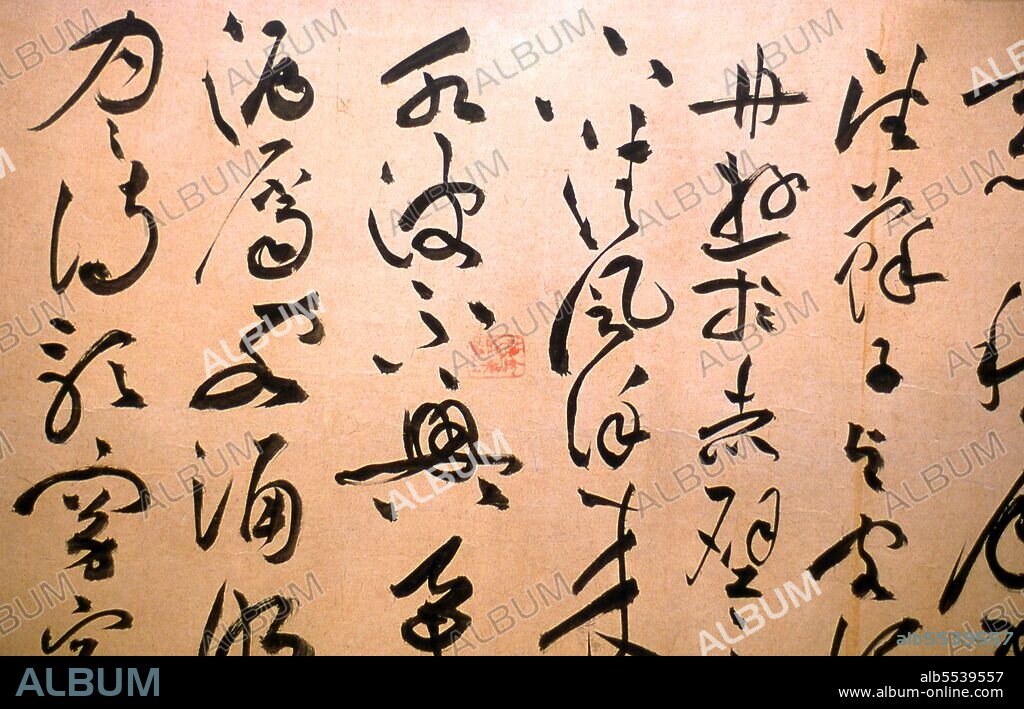alb5539557
China: Caoshu (grass script, first developed during the Han Dynasty 206 BCE-220 CE), Ming Dynasty, Shanghai Museum, Shanghai.

|
Add to another lightbox |
|
Add to another lightbox |



Title:
China: Caoshu (grass script, first developed during the Han Dynasty 206 BCE-220 CE), Ming Dynasty, Shanghai Museum, Shanghai.
Caption:
Cursive script (simplified Chinese: ??; traditional Chinese: ??; pinyin: caoshu) is a style of Chinese calligraphy. Cursive script is faster to write than other styles, but difficult to read for those unfamiliar with it. It functions primarily as a kind of shorthand script or calligraphic style. Cursive script originated in China during the Han dynasty (206 BCE - 220 CE) through the Jin Dynasty period (266 - 420 CE), in two phases. First, an early form of cursive developed as a cursory way to write the popular and not yet mature clerical script. Faster ways to write characters developed through four mechanisms: omitting part of a graph, merging strokes together, replacing portions with abbreviated forms (such as one stroke to replace four dots), or modifying stroke styles.
Credit:
Album / David Henley/Pictures from History/Universal Images Group
Releases:
Model: No - Property: No
Rights questions?
Rights questions?
Image size:
5100 x 3266 px | 47.7 MB
Print size:
43.2 x 27.7 cm | 17.0 x 10.9 in (300 dpi)
Keywords:
ASIA IMAGES • ASIA PICTURES • ASIA • ASIAN IMAGE • ASIAN IMAGES • ASIAN PICTURES • ASIAN • CALLIGRAPHY • CAOSHU • CHINA • CHINE • CHINESE • CLASS • COURSE • CURSIVE • DAVID HENLEY • EDUCATING • EDUCATION • HISTORIA UNIVERSAL • HISTORICAL IMAGES • HISTORICAL PICTURES • HISTORICAL • HISTORY IMAGES • HISTORY PICTURES • HISTORY • INSTRUCTING • INSTRUCTION • LESSON (SCHOOL) • LESSON • MUSEUM • MUSEUMS • PEDAGOGY • PERIOD • PORCELAIN • SCRIPT • SCRIPTS • SHANGHAI • STUDENT • TEACHING • TEACHING, EDUCATION • TRAINING • WRITING
 Pinterest
Pinterest Twitter
Twitter Facebook
Facebook Copy link
Copy link Email
Email

